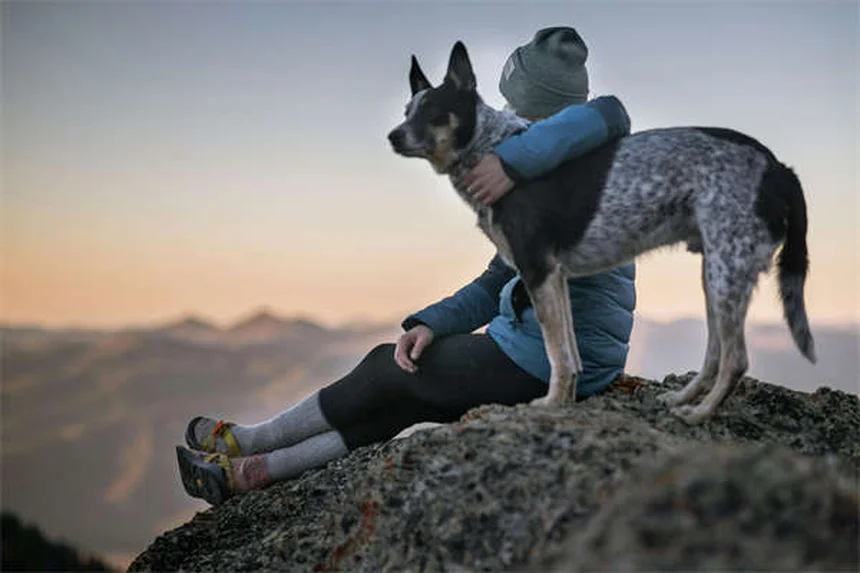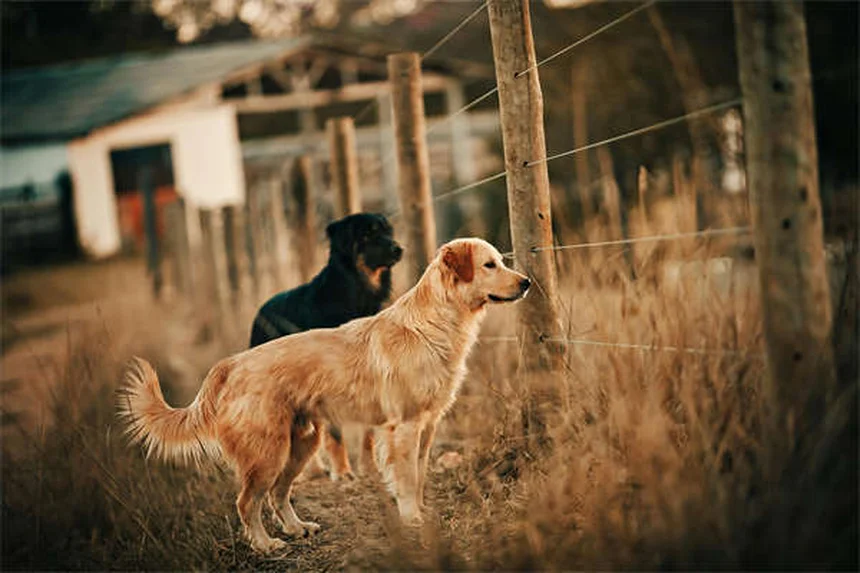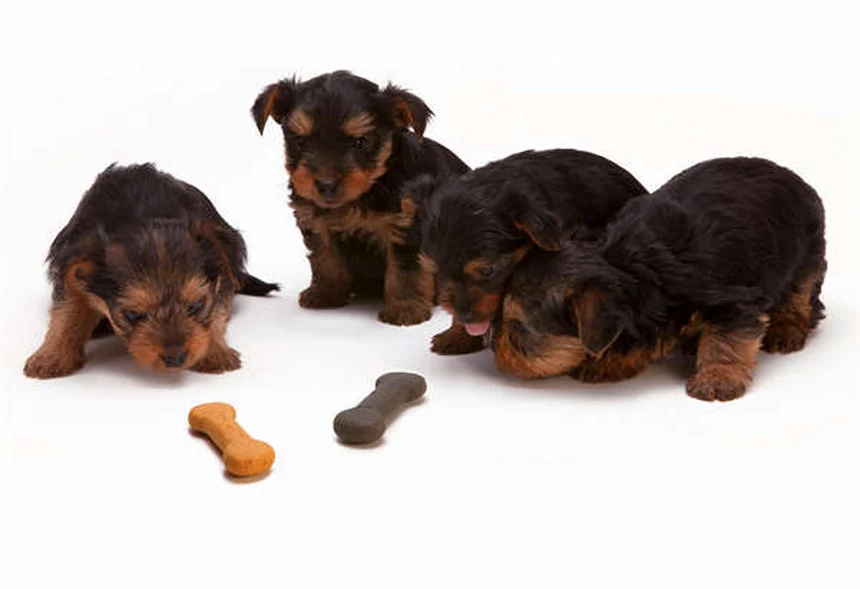Do Cats Need Sweaters? The Surprising Truth About Feline Fashion
Do cats need sweaters? The short answer is: almost never. While those adorable photos of kittens in knitwear might melt your heart, most veterinary experts agree that sweaters are unnecessary - and potentially risky - for our feline friends. Your cat's natural fur coat is perfectly designed to regulate their body temperature, and adding layers can actually cause more harm than good.I've consulted with top cat specialists and behaviorists to break down why sweaters are usually a bad idea, when they might be appropriate (hint: very specific situations), and how to keep your cat comfortably warm without resorting to tiny turtlenecks. Whether you're tempted by cute cat fashion or genuinely concerned about your pet's warmth, you'll want to read this before reaching for that miniature sweater.
E.g. :12 Reasons Why Your Dog Is Peeing in the House (And How to Stop It)
- 1、Are Cat Sweaters Really Necessary?
- 2、When Might a Cat Actually Need a Sweater?
- 3、The Art of Introducing Cat Clothing
- 4、Better Alternatives to Cat Sweaters
- 5、The Final Verdict on Cat Sweaters
- 6、The Psychology Behind Our Love for Dressed-Up Pets
- 7、Alternative Ways to Pamper Your Pet
- 8、The Business of Pet Fashion
- 9、Cultural Perspectives on Pet Clothing
- 10、DIY Pet Fashion - Yay or Nay?
- 11、The Future of Pet Fashion
- 12、FAQs
Are Cat Sweaters Really Necessary?
Let's be honest - when you see those viral photos of cats in tiny sweaters, it's impossible not to smile. But here's the real question: do our feline friends actually need these knitted outfits? I've done some digging, and the answer might surprise you.
The Truth About Cats and Clothing
Dr. Susan Sikule, a cat specialist with clinics in New York, puts it bluntly: "Cats come with their own built-in fur coats." That fluffy exterior isn't just for looks - it's nature's perfect temperature regulator. When we add sweaters, we're basically telling Mother Nature, "Nice try, but I've got this."
Think about it this way: would you wear a winter parka over your winter coat? Probably not, unless you're preparing for an Arctic expedition. For most house cats, sweaters are about as useful as sunglasses at midnight.
Potential Dangers of Feline Fashion
Here's where things get serious. Cat behavior expert Mieshelle Nagelschneider compares sweater-wearing cats to Houdini - they're escape artists who can turn any situation into an adventure (and not the good kind).
Imagine your cat:
- Getting tangled mid-leap while chasing a toy
- Overheating because their natural cooling system is compromised
- Having "accidents" around the house from stress
Not exactly the cute Instagram moment we imagined, right?
When Might a Cat Actually Need a Sweater?
 Photos provided by pixabay
Photos provided by pixabay
The Exception to the Rule
Before you toss all cat sweaters in the donation bin, there are a few situations where they might make sense:
| Cat Type | Sweater Needed? | Why? |
|---|---|---|
| Hairless breeds (like Sphynx) | Sometimes | No natural insulation |
| Post-surgery cats | Yes | Protects shaved areas and incisions |
| Senior cats after grooming | Maybe | If large fur areas are removed |
Getting the Fit Just Right
If you do need to sweater-up your feline, here's a pro tip from Nagelschneider: "Think Goldilocks - not too tight, not too loose." Too snug and your cat will rebel. Too loose and you've basically created a cat-sized escape room.
Want to know if your cat's sweater fits properly? Ask yourself:
- Can they move naturally without restriction?
- Is there room for you to slip two fingers underneath?
- Does your cat seem comfortable (not just tolerating it)?
The Art of Introducing Cat Clothing
Slow and Steady Wins the Race
Let's face it - most cats would rather wear nothing at all. But if you must dress your feline, Dr. Sikule suggests treating it like introducing a new food: gradually and with plenty of positive reinforcement.
Start with just a few minutes while playing with their favorite toy. The movement helps distract them from the weird "something's on me" feeling. Over days or weeks, you can slowly increase the wearing time - but only if your cat remains relaxed.
 Photos provided by pixabay
Photos provided by pixabay
The Exception to the Rule
Here's a clever trick from Nagelschneider: "Use their hunting instincts to your advantage." When cats engage in play, they enter what she calls a "confident mood state" - perfect for accepting new experiences like clothing.
Try this routine:
- Put on the sweater
- Immediately engage with a feather wand or laser pointer
- Keep play sessions short and positive
- Always end before your cat gets frustrated
Better Alternatives to Cat Sweaters
Reading Your Cat's Comfort Signals
Instead of reaching for that tiny sweater, why not learn to read your cat's natural signals? Here's what to watch for:
Signs your cat might be cold:
- Seeking out warm spots (sun patches, near heaters)
- Tucking paws tightly underneath
- Shivering (though this is rare in cats)
Did you know that if you're feeling chilly, your cat probably is too? It's nature's built-in thermometer!
Creating a Cozy Environment
Here's where we can really help our feline friends without forcing them into fashion. Some simple solutions:
- Keep your home at a comfortable temperature (no turning off heat when you're away!)
- Provide warm bedding in favorite spots
- Consider heated cat beds (with proper safety features)
- On cold days, keep indoor cats... indoors
Remember what Nagelschneider said about outdoor cats? "Even 'outdoor' cats need protection from extreme cold." Frostbite isn't just a human problem - cats can suffer too.
The Final Verdict on Cat Sweaters
 Photos provided by pixabay
Photos provided by pixabay
The Exception to the Rule
After all this research, here's my take: for 95% of cats, sweaters are unnecessary at best and potentially harmful at worst. Our feline companions have evolved over thousands of years to regulate their own body temperature - let's trust their design.
That being said, there are those rare exceptions we discussed earlier. The key is to always prioritize your cat's comfort and safety over our desire for cute photos.
A Better Way to Show Love
Instead of sweaters, why not show your affection in ways your cat will actually appreciate?
- Regular grooming sessions (especially for long-haired breeds)
- Creating warm, cozy sleeping areas
- Interactive playtime to keep them active
- Quality nutrition to maintain healthy skin and coat
At the end of the day, our cats don't care about fashion trends - they just want to feel safe, comfortable, and loved. And honestly, isn't that what really matters?
The Psychology Behind Our Love for Dressed-Up Pets
Why We Can't Resist Pet Clothing
Ever wonder why pet clothing has become such a huge industry? It's not just about keeping animals warm - there's some fascinating psychology at play here. Researchers at UCLA found that dressing pets triggers the same warm, fuzzy feelings in our brains as when we see human babies in cute outfits.
Here's the funny thing - while we're busy projecting human emotions onto our pets, they're probably just wondering why we're putting strange fabric on them. I mean, imagine if your cat suddenly decided you needed to wear a tuna-scented onesie!
The Social Media Effect
Let's be real - Instagram changed everything for pet fashion. That perfect shot of Mr. Whiskers in his tiny lumberjack outfit can get thousands of likes. But here's something to consider: are we doing this for our pets, or for the likes?
Platforms like TikTok have created entire communities around pet fashion, with some accounts gaining millions of followers. While this can be fun, it's important to remember that our pets don't understand internet fame. They just know whether they're comfortable or not.
Alternative Ways to Pamper Your Pet
Grooming as Bonding Time
Instead of forcing your cat into clothes they hate, why not try something they'll actually enjoy? Regular brushing sessions can be incredibly soothing for cats. Pro tip: Use this time to check for any skin issues or lumps you might otherwise miss.
I've found that my cat purrs like a motorboat during our weekly brushing sessions. It's our special time together, and bonus - it keeps hairballs to a minimum. Much better than struggling to get her into that adorable (but hated) shark costume!
Creating a Cat Paradise
Here's a radical idea: instead of dressing up your cat, why not create an environment they'll love? Cats go crazy for:
- Window perches with great views
- Vertical spaces to climb
- Cozy hiding spots
- Interactive toys that mimic prey
You'd be amazed at how happy these simple additions can make your feline friend. And the best part? No sweater-related tantrums!
The Business of Pet Fashion
How Big Is This Industry?
Get this - the pet clothing market is projected to reach $7 billion by 2025! That's a whole lot of tiny sweaters. Here's a quick breakdown of where the money goes:
| Category | Percentage of Market | Average Price |
|---|---|---|
| Seasonal Wear | 35% | $15-$30 |
| Costumes | 25% | $20-$50 |
| Everyday Fashion | 20% | $10-$25 |
| Functional Wear | 20% | $25-$60 |
Isn't it wild that we're spending this much on clothes for animals that would probably prefer to be naked? But hey, if it makes us happy and doesn't harm the pets, who am I to judge?
The Rise of Pet Influencers
Some pets have become so famous for their fashion that they're making serious money. Take @mensweardog for example - this dapper pup has worked with major brands like Gucci and Burberry!
But here's something to think about: while these animal models might seem happy in their outfits, they typically undergo extensive training to tolerate clothing. It's not something every pet can or should do. Your average house cat isn't going to sit still for a photo shoot, no matter how cute the outfit is.
Cultural Perspectives on Pet Clothing
How Different Countries View Dressed-Up Pets
This might surprise you - pet clothing isn't universally popular. In many European countries, people think Americans are nuts for dressing up their animals! In Germany for instance, it's much more common to see practical pet gear like reflective vests than fashion items.
Meanwhile in Japan, pet fashion has become an art form. There are entire stores dedicated to luxury pet clothing, with some outfits costing hundreds of dollars. Talk about spoiled pets!
The History of Pet Fashion
Believe it or not, dressing pets isn't a new trend. Ancient Egyptians were known to adorn their cats with jeweled collars. And in Victorian England, wealthy ladies would dress their lapdogs in miniature versions of the latest fashions.
But here's the difference - back then, only the ultra-wealthy dressed their pets. Today, thanks to mass production, anyone can buy a $10 sweater for their cat. Does that mean we're all becoming Victorian aristocrats when it comes to our pets? Maybe just a little!
DIY Pet Fashion - Yay or Nay?
Making Your Own Pet Clothes
For the crafty pet owners out there, making your own pet clothing can be tempting. But before you break out the knitting needles, consider this: homemade items might not have the safety features of commercial pet clothes.
If you do go the DIY route, keep these tips in mind:
- Avoid small buttons or decorations that could be swallowed
- Make sure there are no loose threads that could tangle
- Use breathable fabrics
- Always supervise your pet when they're wearing homemade items
Upcycling Human Clothes for Pets
Here's a fun idea that might actually work - repurposing old baby clothes for pets! The sizing is often similar, and you're giving new life to items that might otherwise be thrown away.
Just last week, I tried putting an old baby sock on my cat's tail (for science, of course). The look she gave me could have melted steel. Lesson learned - some experiments are better left untried!
The Future of Pet Fashion
Smart Clothing for Pets
Get ready for this - the next big thing in pet fashion might be tech-integrated clothing. We're talking about items that can monitor your pet's health, track their activity, or even regulate their temperature.
Imagine a sweater that could tell you when your cat is stressed or overheating. Now that's something that might actually benefit our furry friends! Though knowing cats, they'd probably find a way to disable the technology within minutes.
Sustainable Pet Fashion
As people become more eco-conscious, sustainable pet fashion is gaining traction. Brands are now offering clothing made from recycled materials or organic fabrics.
But here's the million-dollar question: is buying any pet clothing truly sustainable when most pets don't need clothes in the first place? Maybe the greenest option is to let our pets go au naturel!
E.g. :are cat sweaters okay? : r/CatAdvice
FAQs
Q: Can wearing a sweater make my cat overheat?
A: Absolutely! Cats are experts at regulating their own body temperature, and that beautiful fur coat isn't just for looks. When you add a sweater, you're essentially putting a winter jacket over their already perfect insulation system. Dr. Susan Sikule explains that this can interfere with their natural cooling mechanisms, potentially leading to overheating. Remember - if you're comfortable in a t-shirt, your cat probably is too. The only exceptions might be hairless breeds like Sphynx cats in extremely cold environments.
Q: What are the main risks of putting clothes on cats?
A: Beyond overheating, cat behavior consultant Mieshelle Nagelschneider warns about several dangers: restricted movement (imagine trying to leap with a bulky sweater), getting tangled (cats are escape artists who can turn any loose clothing into a hazard), and stress-related issues (like inappropriate elimination). We've all seen those viral videos of cats dramatically flopping over when dressed - that's not just acting! Many cats find clothing extremely stressful, which can lead to both behavioral and health problems.
Q: Are there any situations where a cat sweater is appropriate?
A: In very specific cases, yes. Post-surgical cats might benefit from a light t-shirt to protect shaved areas and prevent licking at incisions. Some senior cats who've had extensive grooming might need temporary warmth. Hairless breeds occasionally require protection in cold weather. But even in these situations, the sweater should be properly fitted, introduced gradually, and never left on unsupervised. As Nagelschneider says, "If your cat is constantly trying to remove it, that's their way of telling you it's not working."
Q: How can I tell if my cat is too cold without a sweater?
A: Watch for these natural signals: seeking warm spots (sun patches, near heaters), tucking paws tightly underneath, or shivering (though this is rare). A good rule of thumb? If you're feeling chilly in your home, your cat probably is too. But instead of reaching for a sweater, consider adjusting your thermostat, providing warm bedding, or keeping your cat indoors on cold days. These solutions respect your cat's natural preferences while keeping them comfortably warm.
Q: What's the best way to introduce clothing if my cat needs it?
A: Slow and positive is the key! Start with just a few minutes while engaging your cat in play - the distraction helps them adjust to the strange sensation. Use their hunting instincts to your advantage with feather wands or laser pointers during "sweater time." Gradually increase duration only if your cat remains relaxed. Never force clothing on a resistant cat. As Dr. Sikule advises, "If they're constantly trying to escape it, that clothing isn't appropriate for that cat." Remember - your cat's comfort should always come before fashion!







